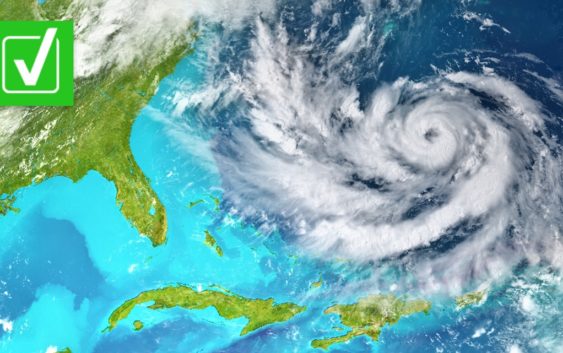- Seven months after Hurricane Helene, Chimney Rock rebuilds with resilience
- Wildfire in New Jersey Pine Barrens expected to grow before it’s contained, officials say
- Storm damage forces recovery efforts in Lancaster, Chester counties
- Evacuation orders lifted as fast-moving New Jersey wildfire burns
- Heartbreak for NC resident as wildfire reduces lifetime home to ashes
Yes, the 'dirty side' of a hurricane is most dangerous

If you’re on the ‘dirty side’ or ‘right side’ of a tropical system, you’re most at risk of serious damage and potential injury from the storm.
GREENSBORO, N.C. — Mother Nature nurtures so many questions about her force and unpredictability — so much so, we have to turn to the experts to VERIFY.
Most recently, it was Ida that pummeled Louisiana with category four hurricane strength and later dumped deadly amounts of rain on New Jersey as a post-tropical system. In between, Ida skirted North Carolina, bringing far less rain than initially forecasted.
As is typical of any storm, some parts of the Atlantic seaboard along Ida’s track bore the impact far worse than others. And, it turns out, where you live in relation to the storm’s center of circulation, can make the difference between life or death…total property loss or minimal damage.
THE QUESTION
Throughout the storm, meteorologists talked about the ‘dirty’ side of Ida and warned people who live on that side of the storm to take precautions very seriously.
THE SOURCES
- NOAA
- Meteorologist Ed Matthews – WFMY News 2
THE ANSWER
Both NOAA and WFMY News 2 meteorologist Ed Matthews affirm it’s true — storms have a ‘dirty side,’ which is the ‘right side’ in the Northern Hemisphere and the ‘left side’ in the Southern Hemisphere.
WHAT WE FOUND
Matthews said, “If you look at the forward motion of the storm, you always look at the righthand side — the righthand semi-circle of the storm. That’s where we’re more likely to have severe weather and also the possibility of tornadoes spinning up, as well.”
NOAA further explained the ‘right side’ references the storm’s direction of movement in the Northern Hemisphere. If the storm is heading north, the ‘right side’ is east of the storm. In the Southern Hemisphere, where storms spin clockwise, it’s the opposite.
In a Northern Hemisphere storm, winds on the ‘right side’ of the eye — the ‘dirty side’ might be 100 miles per hour, compared to winds on the left, which might be 80 miles per hour. That means cities and towns on the ‘dirty side’ are more at risk of serious damage — or worse. That’s why it’s critical to heed emergency notifications and evacuation warnings.
Remember, hurricane season runs through November 30, and Matthews said the most active month in North Carolina is September.
Do you have a question you want verified? Submit a short paragraph or selfie video of the claim, with any supplementary pictures or screen shots, to Meghann Mollerus via:
Facebook: Meghann Mollerus News
E-mail: Mmollerus@wfmy.com
Twitter: @MeghannMollerus